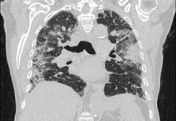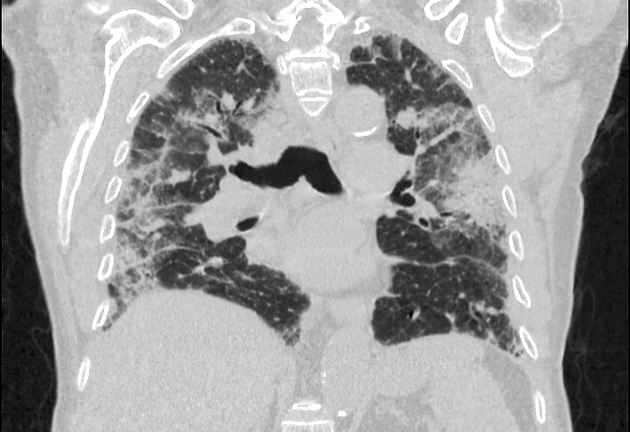Presentation
Fever and dyspnea for the last 10 days.
Patient Data
Age: 80 years
Gender: Male
From the case:
Eosinophilic pneumonia: probable




Download
Info

Bilateral consolidation with peripheral distribution and lower lobes preference gives the "reversed bat wings" appearance. Ground glass patchy opacities with interlobular septal thickening are also present. Small pleural effusion.
Case Discussion
The patient had an elevated eosinophil count in peripheral blood (6%). Combined with the reversed bat wings appearance, this makes the diagnosis of eosinophilic pneumonia very probable.




 Unable to process the form. Check for errors and try again.
Unable to process the form. Check for errors and try again.